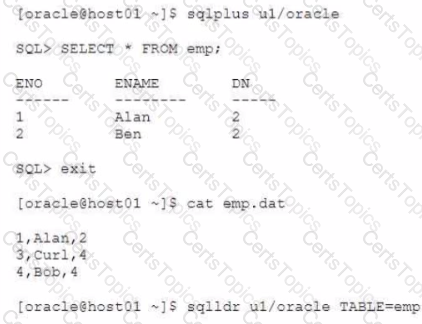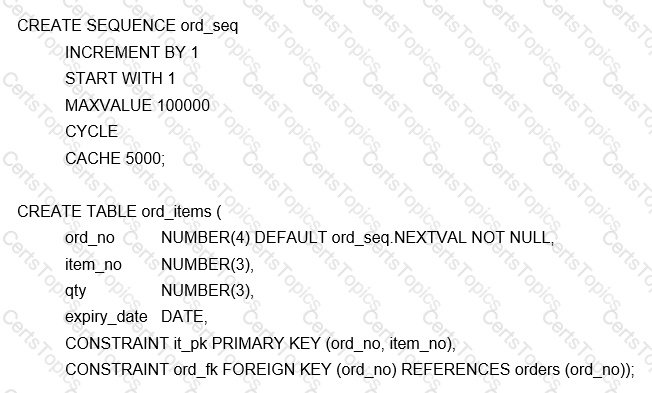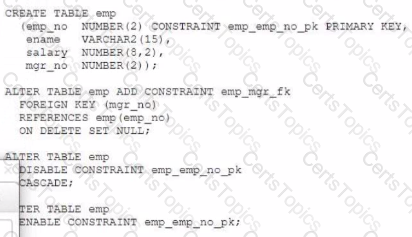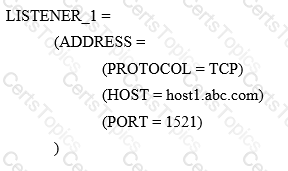Which four statements are true regarding primary and foreign key constraints and the effect they can have on table data? (Choose four.)
Which compression method is recommended for Direct-Path Insert operations?
Which two statements are true about the WHERE and HAVING clauses in a SELECT statement? (Choose two.)
Which two statements are true about the results of using the INTERSECT operator in compound queries? (Choose two.)
Which three statements are true about sequences in a single instance Oracle database?
Which three statements are true regarding single row subqueries?
Examine these commands:

Which two statements are true about the sqiidr execution?
Your database instance was shut down normally and then started in NOMOUNT state. You then execute this command:
ALTER DATABASE MOUNT;
Which two actions are performed? (Choose two.)
In one of your databases, you create a user, HR, and then execute this command:
GRANT CREATE SESSION TO hr WITH ADMIN OPTION;
Which three actions can HR perform? (Choose three.)
Your database instance is started with an SPFILE.
A PFILE is also available. You execute this command:
ALTER SYSTEM SET DB_CACHE_SIZE=100K;
Where Is the value changed?
Examine the description of the SALES1 table:

SALES2 is a table with the same description as SALES1.
Some sales data is duplicated in both tables.
You want to display the rows from the SALES1 table which are not present in the SALES2 table.
Which set operator generates the required output?
Which three statements are true about Oracle synonyms? (Choose three.)
Which three files are used by conventional path SQL*Loader when the TABLE option is not specified? (Choose three.)
You want to write a query that prompts for two column names and the WHERE condition each time it is executed in a session but only prompts for the table name the first time it is executed.
The variables used in your query are never undefined in your session.
Which query can be used?
Examine the description of the customers table:

You need to display last names and credit limits of all customers whose last name starts with A or B in lower or upper case, and whose credit limit Is below 1000.
Examine this partial query:
SELECT cust_last_name, cust_credit_limit FROM customers
Which two where conditions give the required result?
A)

B)

C)

D)

E)

Evaluate these commands which execute successfully:

Which two statements are true about the ORD_ITEMS table and the ORD_SEQ sequence? (Choose two.)
Examine this command:
CREATE UNDO TABLESPACE undotbs01
DATAFILE ‘undotbs_01.dbf’
SIZE 100M
AUTOEXTEND ON;
Which two actions must you take to ensure UNDOTBS01 is used as the default UNDO tablespace? (Choose two.)
In one of your databases, the user HR has the password HRMGR.
You want to connect to a database instance whose listener listens on port 1531 by using this statement:
CONNECT HR/HRMGR@orcl
No name server is used.
Which statement is true about ORCL?
Examine these SQL statements which execute successfully:

Which two statements are true after execution?
In the spfile of a single instance database, LOCAL_LISTENER is set to LISTENER_1.
The TNSNAMES.ORA file in $ORACLE_HOME/network/admin in the database home contains:

Which statement is true?
Which three functions are performed by dispatchers in a shared server configuration? (Choose three.)